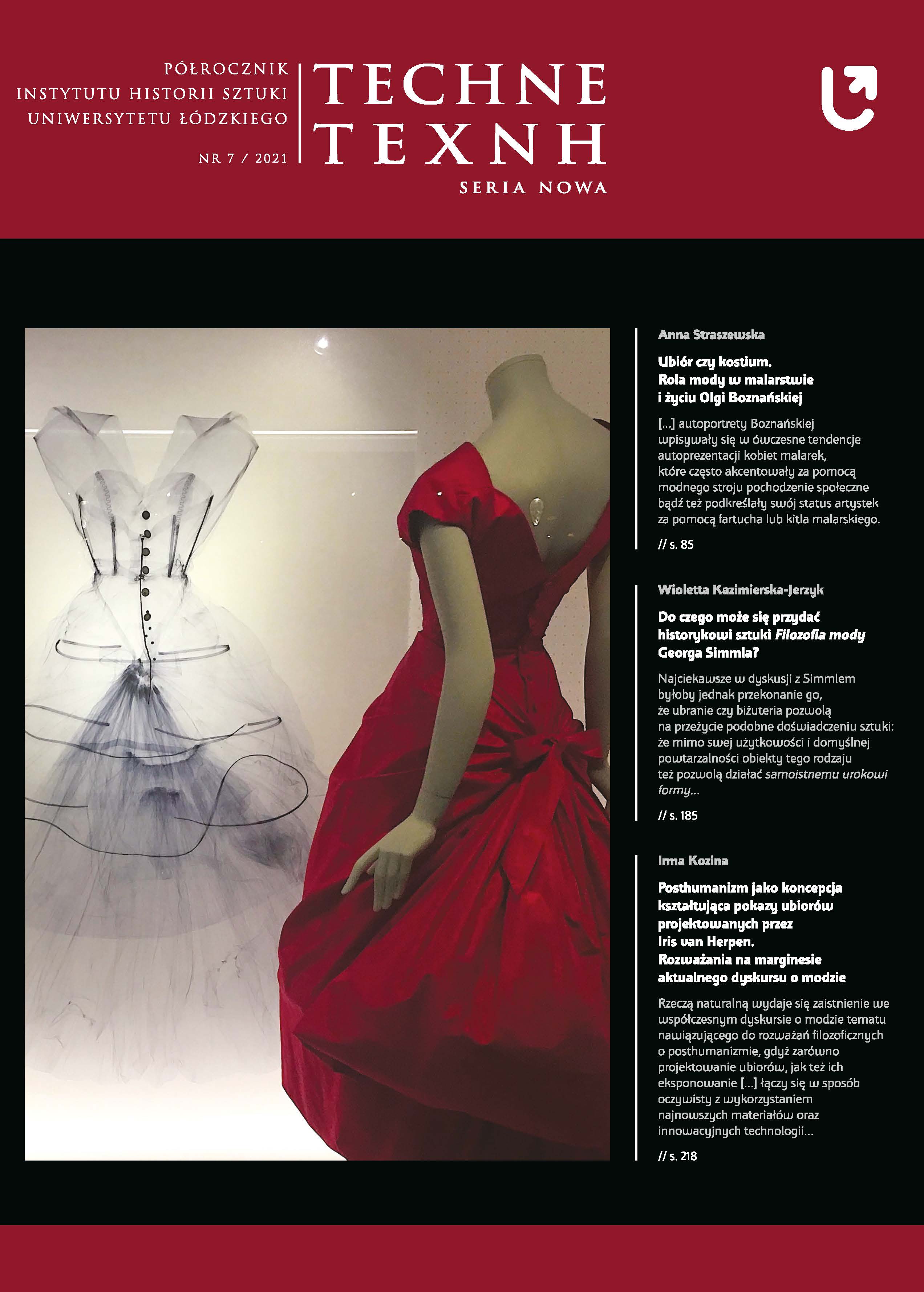Jak wygląda Chinka? Kostiumologiczne konstrukcje „chińskości”
How does a Chinese woman look? Sartorial constructions of “chineseness”
Author(s): Joanna WasilewskaSubject(s): Fine Arts / Performing Arts
Published by: Wydawnictwo Uniwersytetu Łódzkiego
Keywords: China; fashion; body modification; femininity; beauty standards; tradition invented
Summary/Abstract: The article analyzes the ideas about China popular in the West, an important element of which is clothing and other practices related to the modification of the external appearance of women. The three discussed examples of such ideas – the construction of “Chineseness” and “femininity” – are set in various historical moments, from the second half of the 19th century to the present day. The practice of foot restraints by Chinese women was treated by foreigners – initially only men who had little contact with Chinese women – as one of the local peculiarities. At the height of the colonial era, at the turn of the 19th and 20th centuries, it became evidence of the barbarism and backwardness of the decaying empire; a significant role in shaping such a message was played by more and more European and American travelers and activists. The anonymous Chinese woman, presented to Western audiences through Western publications, was a victim of a peculiar cultural practice, and at the same time – interestingly – a creature devoid of sexual attraction to a non-Chinese man. An embroidered slipper concealing a mutilated foot was a visual sign of this status. The qipao dress evoked a number of different associations. Initially, they referred to the emancipatory rhetoric, through ties with men’s clothing and the ethos of the first Chinese women who undertook education unavailable to them for centuries. Then – to the cosmopolitan and modern elegance and lifestyle of which Shanghai was the mainstay in the first half of the 20th century, and at the same time to republican and national values. The image of a woman in qipao, both in China and elsewhere, was associated with modernization, which in turn – with westernization. The hybrid cut of this outfit and the associated shade of eroticism, this time “understandable” for foreigners as well as for the Chinese, fit perfectly into such a concept of modernization. After the crisis of popularity, qipao triumphantly returned at the end of the 20th century, but this time as a nostalgic symbol of Chinese tradition and identity. Hanfu is a movement of a peculiarly understood reconstruction, existing in mainland China for about twenty years, motivated by both nationalistic resentments and aesthetic fascinations. It refers to the times of “truly Chinese” dynasties, but seen through the prism of contemporary pop culture, especially period movies and series, often containing elements of fantasy. Participation in this movement dominated by young women is abundantly visually documented. The images produced and disseminated in this way circulate in enormous numbers on the Chinese Internet, but they are also increasingly penetrating the global network. They create the image of a Chinese woman as a perfect beauty, delicate and airy, fascinated by the past, and at the same time aware of contemporary beauty patterns and closely following them. As stereotypical as the previous ones, this image is produced mostly in China and by Chinese women themselves. To some extent, they regain control over their image, but now it fits into the restrictive and disciplining system of social roles in their own culture.
Journal: TECHNE. Seria Nowa
- Issue Year: 2021
- Issue No: 7
- Page Range: 157-171
- Page Count: 15
- Language: Polish

